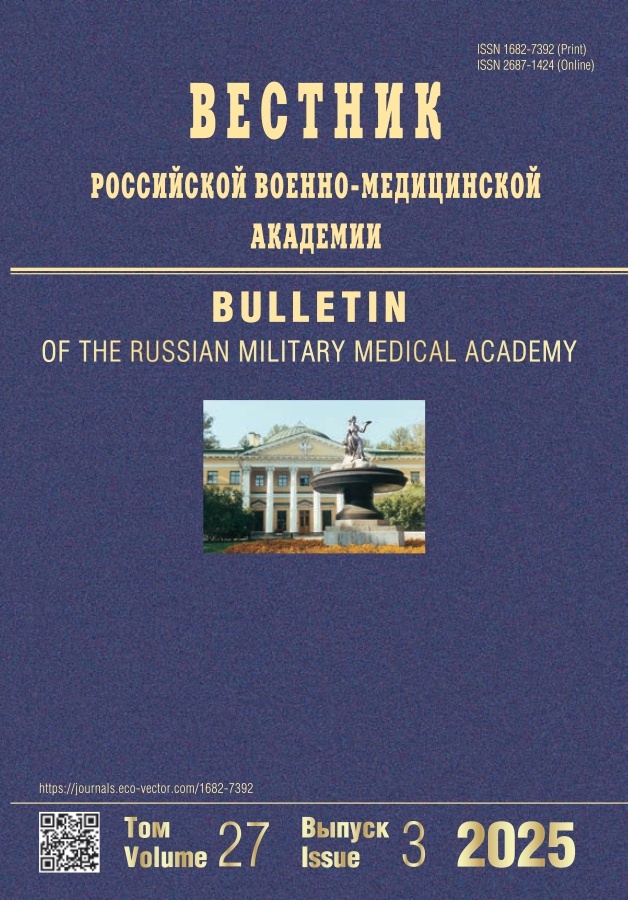Neuronavigation Assistance. Decreased radiation exposure during spinal surgery in patients with severe combined trauma
- Authors: Badalov V.I.1, Spitsyn M.I.1, Korostelev K.E.1, Yarmoshuk R.V.1, Rodionova A.A.1
-
Affiliations:
- Military Medical Academy. S. M. Kirov
- Issue: Vol 22, No 2 (2020)
- Pages: 59-65
- Section: Articles
- URL: https://journals.rcsi.science/1682-7392/article/view/50047
- DOI: https://doi.org/10.17816/brmma50047
- ID: 50047
Cite item
Full Text
Abstract
Absnract. The results of the study of intraoperative x-ray irradiation of the affected two arrays are presented: the main array using neuronavigation and the control group, where standard 2D fluoroscopy was used. The radiation load on the operating surgeon and auxiliary operating personnel was also evaluated. Intraoperative visualization was carried out using the second-generation «iNtellect ENT Navigation» rack of the «Stryker» company (United States of America) for the victims of the main array and the «Ziehm Vision RFD» optical-optical converter (Germany) of the company for the victims of the control group. The imaging option using an electron-optical transducer is especially important for minimally invasive procedures, where instrumentation is performed percutaneously without direct anatomical control, as opposed to open procedures or working with distorted anatomical structures during injuries. Biplanar fluoroscopy was one of the first intraoperative methods of imaging in real time, and remains one of the leading technologies in orthopedic and spinal surgery. However, radiation exposure from intraoperative fluoroscopy remains a serious problem for patients, surgeons, and operating support staff. The negative effect of ionizing radiation leads to cell damage through the induction of deoxyribonucleic acid and the release of reactive oxygen species. In this regard, cell death or genome instability occurs, which leads to various radiation-related pathologies. It was found that the use of neuronavigation reduces the number of errors, reduces intraoperative trauma, and significantly reduces intraoperative radiation exposure to the injured, operating surgeon and auxiliary operating personnel. The large-scale introduction of navigation technologies will reduce or completely eliminate the harmful effects of ionizing radiation on the injured and medical personnel.
Full Text
##article.viewOnOriginalSite##About the authors
V. I. Badalov
Military Medical Academy. S. M. Kirov
Author for correspondence.
Email: vmeda-nio@mil.ru
Russian Federation, Saint Petersburg
M. I. Spitsyn
Military Medical Academy. S. M. Kirov
Email: vmeda-nio@mil.ru
Russian Federation, Saint Petersburg
K. E. Korostelev
Military Medical Academy. S. M. Kirov
Email: vmeda-nio@mil.ru
Russian Federation, Saint Petersburg
R. V. Yarmoshuk
Military Medical Academy. S. M. Kirov
Email: vmeda-nio@mil.ru
Russian Federation, Saint Petersburg
A. A. Rodionova
Military Medical Academy. S. M. Kirov
Email: vmeda-nio@mil.ru
Russian Federation, Saint Petersburg
References
Supplementary files














